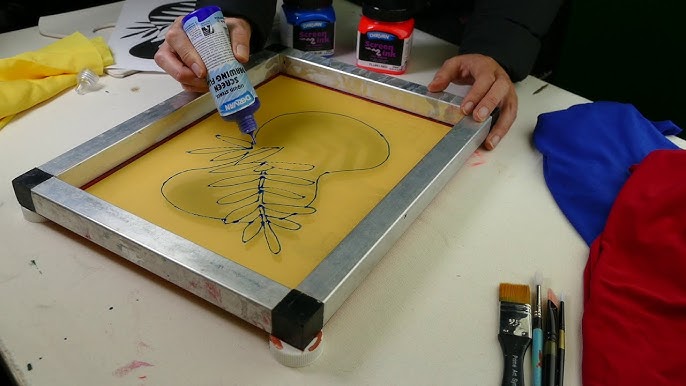ChatGPT said: 10:9 Design Screen Printing Texas: costs explained
The Vital Overview to Comprehending Screen Printing and Its Versatile Uses
Screen printing has an abundant background that dates back to ancient times, developing into an innovative strategy made use of across numerous industries today. This overview explores the ins and outs of the screen printing process, describing its applications in home, advertising, and style décor - 10:9 Design Embroidery. Recognizing these principles can open up innovative potential for both imaginative and industrial tasks. The following sections will certainly expose important tips and methods to boost one's screen printing endeavors
The History of Screen Printing
Although screen printing has roots that trace back centuries, its development mirrors the technological and imaginative improvements of numerous societies. Coming from in old China, the method was at first utilized for enhancing textiles and later infect Japan, where it ended up being integral to Ukiyo-e woodblock printing. The approach changed to Europe in the 18th century, where it obtained appeal amongst craftsmens and industrial printers. The development of photo emulsion in the 20th century reinvented screen printing, enabling more complex designs and higher performance. Musicians like Andy Warhol better propelled its popularity, utilizing the medium to develop renowned works that blended commercialism and art. By the late 20th century, screen printing had developed itself as a versatile method, used in vogue, marketing, and art. Today, it remains to develop, incorporating electronic technology and broadening its applications throughout various industries.
The Screen Printing Process Explained
Screen printing changes imaginative visions into substantial layouts through a series of exact actions. An image is created and after that transferred onto a screen, normally made of great mesh material extended over a structure. A light-sensitive solution is related to the screen, which is revealed to light, setting in locations not covered by the photo. After rinsing the unhardened solution, a pattern is created.
Next off, the screen is put over the substrate, whether it be textile, paper, or an additional product. Ink is after that pressed with the open locations of the pattern making use of a squeegee, depositing the design onto the substrate below. This procedure can be duplicated for numerous colors, needing different screens for each and every hue. The published item is cured utilizing warmth to assure the ink sticks effectively, resulting in a resilient, vibrant design all set for use.
Sorts Of Screen Printing Techniques

Furthermore, specialized methods, such as discharge screen printing, get rid of dye from the material to produce softer prints, while aluminum foil screen printing applies metallic foil to achieve a shiny finish (10:9 Design Screen Printing Texas). Each strategy provides unique characteristics, satisfying different innovative requirements and production scales, ultimately broadening the possibilities within the screen printing domain
Applications of Screen Printing in Numerous Industries
Furthermore, the signs and advertising sectors make use of screen printing for producing attractive displays and banners. This method permits strong colors and elaborate styles that capture focus. In electronic devices, screen printing is utilized for using conductive inks to circuit card, important for element links. Moreover, the home design sector embraces screen printing to create distinct designs on fabrics and wall art. In general, screen printing works as a vital device across varied areas, enhancing items with customized and aesthetically attractive graphics.
Tips for Successful Screen Printing Projects
While undertaking a screen printing task, mindful attention to detail can considerably enhance the final outcome. First, picking high-quality products is important; this consists of the screen, inks, and substrates. Using proper mesh counts can impact ink deposition and detail resolution. Prep work is just as vital; detailed cleaning of screens and correct exposure times assure crisp prints.
Next off, accurate enrollment is vital for multi-color prints. Making use of positioning tools can help accomplish precise layering. Additionally, testing prints on scrap products before manufacturing assists determine potential issues without losing sources.

Frequently Asked Questions
What Materials Are Ideal for Screen Printing on Fabric?
Cotton and polyester blends are suitable for screen printing on fabric as a result of their resilience and ink absorption. In addition, specialty fabrics like silk or canvas can produce special textures and finishes, boosting the general style quality.
Exactly how Do I Clean and Maintain Screen Printing Devices?
To maintain and clean screen printing devices, one need to regularly clean displays with proper solvents, examine squeegees for wear, oil moving components, and shop all things in a completely dry, dust-free setting to prolong their life-span.
What Are the Ecological Impacts of Screen Printing?
Screen printing can have substantial ecological influences, consisting of chemical waste from inks and solvents, water usage throughout cleansing processes, and power usage. Environmentally friendly products and lasting methods are necessary for reducing these negative effects.
Can Screen Printing Be Done at Home Effectively?
Screen printing can be successfully done at home with the right materials and techniques. Enthusiasts can produce high quality prints, though success depends upon their ability level, tools, and understanding of the process entailed.
What Are the Prices Related To Starting a Screen Printing Company?

Beginning a screen printing organization entails expenses for devices, products, and work space. First costs commonly vary from a couple of hundred to numerous thousand bucks, depending upon the scale, high quality of machinery, and preferred manufacturing capability.
Screen printing has a rich history that dates back to old times, evolving right into an advanced method utilized throughout different markets today. An additional technique, rotary screen printing, uses round displays, helping with constant printing on textile rolls, thereby boosting performance for large-scale manufacturings. In addition, specialty techniques, such as discharge screen printing, get rid of dye from the textile to create softer prints, while foil screen printing applies metallic foil to attain a shiny surface. In the fashion market, screen printing is widely utilized to develop dynamic styles on clothing, enabling brand names to showcase their one-of-a-kind styles. Cotton and polyester blends are optimal for screen printing on textile due to their toughness and ink absorption.